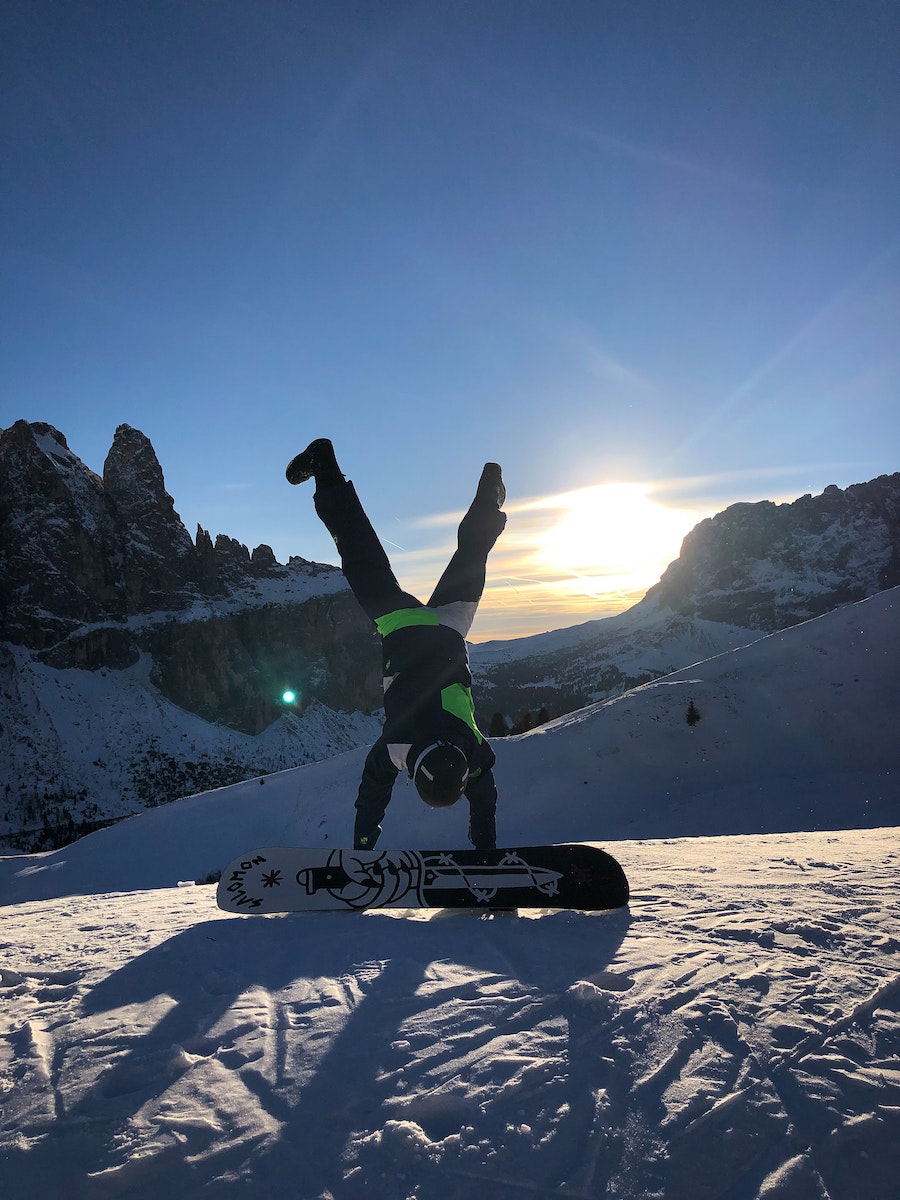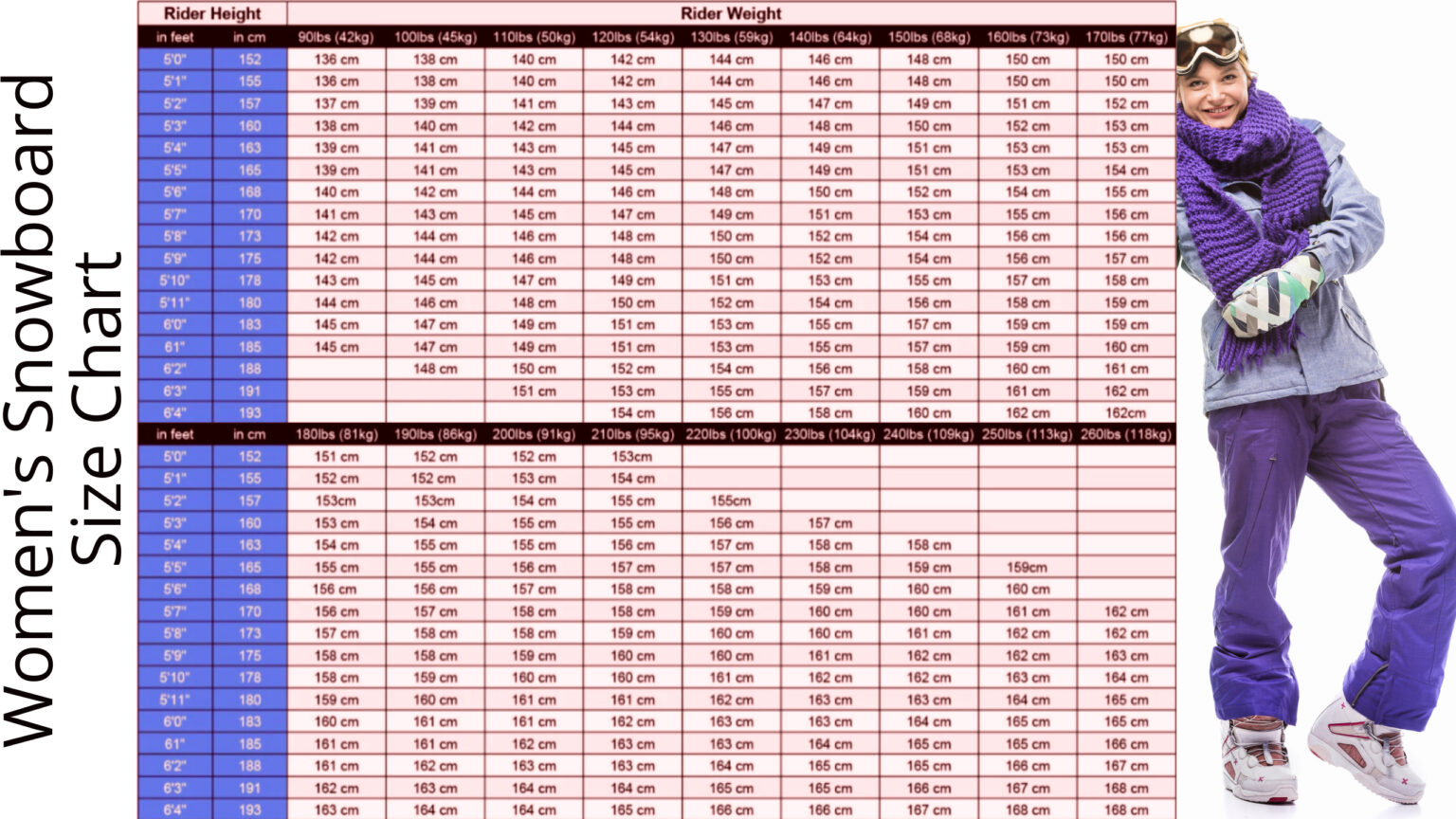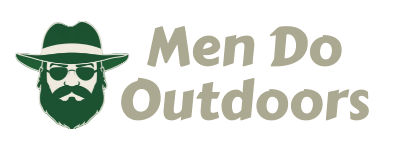Table of Contents
Snowboard Sizing Interactive Guide
Snowboard Sizing Guide
Introduction
Snowboarding, a sport that marries the adrenaline rush of high-speed action with the serene beauty of nature, is an exhilarating experience. However, to truly relish this thrilling sport, it’s paramount to have the right equipment. The most critical piece of this equipment? Your snowboard. Without it, you’re merely a spectator standing on a snowy slope, dreaming of carving your way down the mountain.
This comprehensive guide aims to equip you with all the necessary information to choose the perfect snowboard for your needs. We’ll delve into the intricacies of snowboard sizing, including the importance of a snowboard size chart, the nuances of men’s and women’s snowboard sizing, and the significance of bindings.




The Importance of Snowboard Sizing
Many novice snowboarders, driven by their eagerness to hit the slopes, overlook the importance of selecting the right snowboard size. However, snowboard sizing is a critical aspect of the snowboarding process. It’s essential to choose a board that fits both your physical stature and your snowboarding needs.
Choosing the right snowboard size is not just about comfort; it’s about performance and safety too. A board that’s too small may not provide the stability you need, especially at high speeds or in deep snow. Conversely, a board that’s too large may be difficult to control, increasing the risk of falls and injuries.
Factors to Consider in Snowboard Sizing
When choosing the right snowboard size, there are several factors to consider:
- Your Physical Size: The first and most obvious factor is your physical size. This includes both your height and weight. A common rule of thumb is to select a board that, when upright, reaches somewhere between your chin and your nose. However, your weight also plays a significant role. If you’re lean, you might want to opt for a smaller board, while larger individuals may prefer larger boards.
Your weight is crucial because it affects the board’s flex, or its ability to bend and absorb shocks. A heavier rider on a too-small board may cause it to flex more than intended, affecting its performance and potentially damaging it. On the other hand, a lighter rider on a too-large board may not be able to flex it properly, resulting in a stiff, unresponsive ride.
- Your Skill Level: Your snowboarding skill level is another crucial factor in determining the right snowboard size. Longer boards tend to offer more stability, making them a good choice for beginners. However, they also gather speed more quickly and don’t turn as well as shorter boards. Shorter boards, on the other hand, offer greater maneuverability but may lack stability. Beginners often prefer medium-length boards, which provide a balance between stability and maneuverability.
As you progress and become more confident, you might want to experiment with different board sizes to see what suits your style best. For instance, if you’re into freestyle snowboarding, you might prefer a shorter board for its maneuverability. If you’re into freeriding or powder snowboarding, a longer board might be more suitable for its stability and float.
- Your Riding Style: Your preferred riding style also influences your choice of snowboard size. For instance, freestyle snowboarders, or “jibbers,” often prefer shorter boards for their maneuverability. On the other hand, those who enjoy traversing entire mountains might prefer longer boards for their stability and speed.
Your riding style can also influence the type of board you choose. For instance, freestyle boards are typically twin-tipped (the nose and tail are identical) and designed to perform well in parks and halfpipes. Freeride boards, on the other hand, are typically directional (the nose is different from the tail) and designed to perform well in off-piste conditions.
Fortunately, there are numerous resources available to help you determine the right snowboard size. A simple Google search for “snowboard sizing chart” or “snowboard size chart” will yield hundreds of calculators and guides to assist you. However, it’s important to remember that these tools should be used as a starting point and not taken as gospel. Always consider your physical size, skill level, and riding style when choosing a snowboard size.




Understanding Snowboard Types
Just as there are different types of cars for different driving needs, there are different types of snowboards for different riding styles. Understanding these types is crucial in determining the right snowboard size for you.
Freestyle Snowboards are shorter, lighter, and more maneuverable, making them perfect for tricks and jumps in the terrain park. These boards are often chosen by those who spend a lot of time in the snow park or those who like to make the whole mountain their playground. The shorter length allows for easier control in the air and faster spins.
All-Mountain Snowboards are versatile and designed to handle a variety of conditions and terrain, making them a popular choice for many riders. These boards are typically medium in length, providing a balance between control and speed. They are designed to perform well on groomed runs, in powder, and in the park.
Freeride Snowboards are longer and designed for off-piste and backcountry riding. These boards are typically used by riders who spend most of their time off groomed runs and in varied terrain. They are longer to provide stability and float in powder.
Powder Snowboards are designed specifically for deep snow conditions. These boards are often wider and longer to provide more surface area, which helps the board float on top of the powder. They also typically have a more pronounced rocker in the nose to help keep it above the snow.
Splitboards are designed for backcountry exploration and can be split into two separate skis for climbing uphill. These boards are ideal for riders who venture into the backcountry where lift service is not available. They provide the ability to ascend slopes in ski mode and then be reconnected as a snowboard for the descent.
Each of these types of snowboards may require different sizing considerations, so it’s important to understand what type of riding you plan to do before choosing your board size.
Snowboard Size Chart Explanation
A snowboard size chart is a valuable tool that can help you determine the right snowboard size based on your weight and height. However, it’s not as simple as just finding your height and weight on the chart. You also need to consider your skill level and riding style.
For example, a beginner might want to choose a slightly shorter board for easier control, while an experienced rider might choose a longer board for greater speed and stability. Similarly, a freestyle rider might prefer a shorter board for better maneuverability in the park, while a freeride rider might prefer a longer board for better performance in off-piste conditions.
A snowboard size chart typically provides a range of board lengths for each weight category. It’s important to understand that these are just guidelines and the right size for you may be at the lower or higher end of the range, or even outside the range, depending on your height, skill level, and riding style.
Men’s Snowboard size chart

Women’s Snowboard size chart

Women’s Snowboard Sizing
While the basics of snowboard sizing apply to both men and women, there are some key differences to consider. Women’s snowboards are typically shorter, narrower, and have a softer flex to accommodate the average woman’s lower body weight and smaller foot size.
When choosing a women’s snowboard size, it’s important to consider not only your height and weight but also your shoe size. A board that’s too wide for your boots can be difficult to control, while a board that’s too narrow can cause your boots to hang over the edge, which can lead to uncomfortable and inefficient riding.
Women’s snowboards also often feature a narrower waist width (the width of the board at its narrowest point) to match the typically smaller boot size of women. This allows for easier edge-to-edge transitions.
Kids Snowboard size chart

Children’s Snowboard Sizing
Choosing the right snowboard size for children can be a bit tricky because children grow quickly and their skill level can progress rapidly. A board that’s too big can be difficult for a child to control, while a board that’s too small may not provide enough stability or may be outgrown quickly.
When choosing a snowboard size for a child, it’s important to consider their current height and weight, but also to anticipate their growth and skill development. It may be tempting to buy a larger board for them to grow into, but it’s crucial to ensure that the board is manageable for their current size and skill level for safety and enjoyment.
Children’s snowboards also often feature softer flex and smaller sizes to accommodate their lighter weight and smaller size. Some children’s snowboards also feature design elements to make learning easier, such as a catch-free edge design to reduce falls.

Impact of Snow Conditions and Terrain
Just as a surfer would choose a different board for small waves versus big waves, a snowboarder should consider the typical snow conditions and terrain they’ll be riding on when choosing a snowboard size.
For instance, if you frequently ride in areas with deep powder, you might prefer a slightly longer board to provide more float. On the other hand, if you’re often on hard-packed snow or icy conditions, a shorter board with a stiffer flex can offer better control. Similarly, if you love carving up groomed runs, a longer board can provide better stability at high speeds, while a shorter board might be more suitable for tight turns in the trees or tricks in the park.
Different terrains can also require different board types and sizes. For example, if you’re riding in a terrain park with jumps, rails, and halfpipes, a shorter and more maneuverable freestyle board might be ideal. If you’re carving down groomed runs, a medium-length all-mountain board might be the best choice. And if you’re exploring off-piste terrain or deep powder, a longer freeride or powder board might be needed.

Understanding Snowboard Flex and Camber
The flex and camber of a snowboard can significantly affect its performance and should be considered when choosing a snowboard size.
Flex refers to the board’s stiffness. A softer flex is more forgiving and easier to turn, making it a good choice for beginners, while a stiffer flex offers more stability at high speeds and better edge hold for carving, making it popular among more advanced riders.
Camber refers to the board’s shape when viewed from the side. Traditional camber has a slight upward curve in the middle, providing good edge hold and stability. Rocker, or reverse camber, has a slight downward curve, providing better float in powder and a more playful ride. Hybrid designs combine camber and rocker to offer a balance of characteristics.
Different types of riding can benefit from different flex and camber profiles. For example, a stiff, cambered board might be ideal for high-speed carving, while a soft, rockered board might be better for playful freestyle riding.
Snowboard Binding Position and Stance
Your snowboard bindings are your direct connection to your board, and their position can greatly affect your riding. Most snowboards have multiple holes for mounting the bindings, allowing you to adjust your stance width and the angle of your feet.
Your stance width should be roughly shoulder-width apart, but you can adjust it to your comfort. A wider stance can provide more stability, while a narrower stance can make turning easier. The angle of your feet can also be adjusted to match your riding style. A common setup is to have the front foot angled slightly forward and the back foot angled slightly backward, known as a “duck stance.”
Your stance – whether you ride with your left foot forward (regular) or your right foot forward (goofy) – is also an important factor. Most people have a natural preference, but if you’re not sure, there are several tests you can do to determine your stance. For example, you can see which foot you naturally put forward when you slide on a slippery floor in socks.

Conclusion
Choosing the right snowboard size and bindings is a critical step in your snowboarding journey. It can significantly impact your performance and enjoyment of the sport. Therefore, it’s worth taking the time to research and find the perfect fit for you.
If you’re a beginner, visiting a physical store and trying out different gear can be incredibly helpful. Knowledgeable storekeepers can provide valuable advice and help you find the right equipment. Once you gain more experience and understand your preferences, you’ll be able to select the right gear more quickly and confidently.
Do you have any tips or tricks for snowboard sizing and binding selection? We’d love to hear them! Share your insights in the comments below, and don’t forget to share this comprehensive snowboard sizing guide on Facebook and Twitter.
Remember, the right gear can make a world of difference in your snowboarding experience. So, use this snowboard sizing guide to find the perfect fit and hit the slopes with confidence!
Frequently Asked Questions about Snowboard Sizing
1. How do I choose the right snowboard size?
Choosing the right snowboard size depends on your height, weight, skill level, and riding style. A general rule of thumb is to choose a board that reaches somewhere between your chin and your nose when stood upright. However, you should also consider your weight and skill level. Beginners and lighter riders might prefer a shorter board for easier control, while advanced riders and heavier riders might prefer a longer board for more stability.
2. Can I use a snowboard that’s too big or small for me?
Using a snowboard that’s too big or small for you can make snowboarding more difficult and less enjoyable. A board that’s too big can be hard to control, while a board that’s too small may not provide enough stability. It’s best to choose a board that fits your height, weight, and skill level.
3. How often should I change my snowboard size?
How often you should change your snowboard size depends on several factors. If you’re still growing, you might need to change your board size more frequently. Similarly, if your weight changes significantly, you might need to adjust your board size. Your skill level can also affect your board size. As you become more skilled, you might prefer a longer board for more speed and stability.
4. What’s the difference between men’s and women’s snowboard sizing?
Women’s snowboards are typically shorter, narrower, and have a softer flex to accommodate the average woman’s lower body weight and smaller foot size. When choosing a women’s snowboard size, it’s important to consider not only your height and weight but also your shoe size.
5. How does my riding style affect my snowboard size?
Your riding style can greatly affect your snowboard size. For instance, if you’re into freestyle snowboarding, you might prefer a shorter board for its maneuverability. If you’re into freeriding or powder snowboarding, a longer board might be more suitable for its stability and float.
6. What is snowboard flex and how does it affect my board size?
Snowboard flex refers to the board’s stiffness. A softer flex is more forgiving and easier to turn, making it a good choice for beginners, while a stiffer flex offers more stability at high speeds and better edge hold for carving, making it popular among more advanced riders. Your weight can affect the board’s flex, so it’s important to choose a board size that’s appropriate for your weight.
7. How do I determine my snowboard stance?
Your snowboard stance is whether you ride with your left foot forward (regular) or your right foot forward (goofy). Most people have a natural preference, but if you’re not sure, there are several tests you can do to determine your stance. For example, you can see which foot you naturally put forward when you slide on a slippery floor in socks.
8. How do I adjust my snowboard bindings?
Most snowboards have multiple holes for mounting the bindings, allowing you to adjust your stance width and the angle of your feet. Your stance width should be roughly shoulder-width apart, but you can adjust it to your comfort. The angle of your feet can also be adjusted to match your riding style. A common setup is to have the front foot angled slightly forward and the back foot angled slightly backward, known as a “duck stance.”
9. How does snowboard camber affect my ride?
Camber refers to the board’s shape when viewed from the side. Traditional camber has a slight upward curve in the middle, providing good edge hold and stability. Rocker, or reverse camber, has a slight downward curve, providing better float in powder and a more playful ride. Hybrid designs combine camber and rocker to offer a balance of characteristics. Your choice of camber can affect your board’s performance, so it’s important to consider your riding style when choosing a board.
10. How do snow conditions and terrain affect my snowboard size?
Different snow conditions and terrains can require different board sizes. For example, if you frequently ride in deep powder, you might prefer a slightly longer board to provide more float. On the other hand, if you’re often on hard-packed snow or icy conditions, a shorter board with a stiffer flex can offer better control. Similarly, different terrains like groomed runs, off-piste, or park can require different board types and sizes.









Hi! I am a male and I own a 152 snowboard and I wanted to give it to my girl or sell it to buy another one. She is 168 cm tall and 55 kg. Her foot size is around 40 in eu size. Will my board fit her? Thank you in advance.